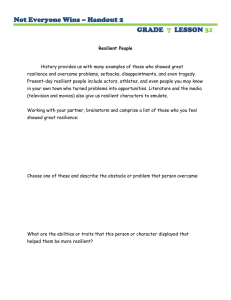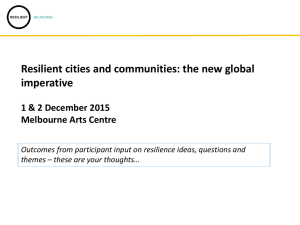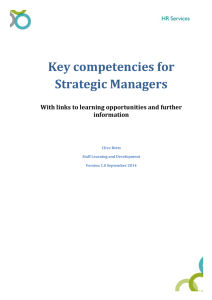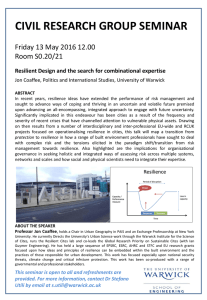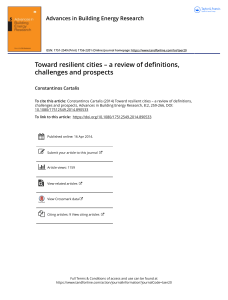Managing Change and Stress Central Washington University January 24, 2013
advertisement
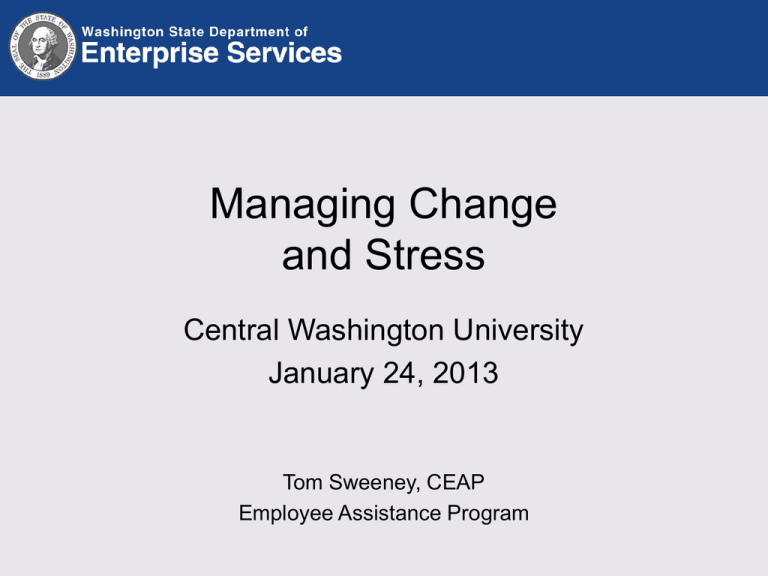
Managing Change and Stress Central Washington University January 24, 2013 Tom Sweeney, CEAP Employee Assistance Program The “Too Much” Phenomenon • Too many changes • Too many unrealistic expectations • Too much responsibility • Too much information Primary issues: 1. 2. 3. 4. Responsibility & accountability Challenge or problem Chosen or imposed Control or influence Change, Stress and Distress Change: Situational: one event causing stress or distress Cumulative: additional events impacting you Traumatic: situation with magnified impact on you Stress: physical, emotional, & psychological response to a demand Eustress: everyday stress of life Distress: feeling “all stressed out” Impact of Distress Physical: increased heart rate, blood pressure & perspiration; headache & GI issues; illness & disease Mental: impaired decision-making, problem-solving, concentration, focus, attention & memory Emotional: uncertainty, fear, depression, anxiety; grief & sadness; hopeless & helpless; frustration, anger Behavioral: isolation; temper tantrums; violence; misuse of food, medication, substances, computer Workplace: performance or attendance issues & interpersonal conflicts Coping The ABC approach: 1. Activating stressor – event or situation 2. Beliefs – thoughts and perceptions about A 3. Consequences – physical, emotional, behavioral, interpersonal 4. Plan – consistent and dedicated action Another Approach Situation management: requires action to influence outcomes & cope effectively in stressful situations Self-control: requires taking personal responsibility for actions & reactions to a situation Effective Management Situation Management: • problem-solving & decision-making skills • task & time management skills • communication & conflict resolution skills Self-Control: • perceptions, attitude, & behavior • thoughts, feelings, & behavior • resilience Resilience Ability to bounce back Includes focus on responsibility and accountability Stress Management is a tool that can help you become resilient Self-care – mental, emotional & physical Resilience Five key attributes of resilience: 1. 2. 3. 4. 5. Positive Focused Flexible Organized Proactive How resilient are you? How resilient will you become? Your Life • Physical • Occupational • Environmental • Emotional • Intellectual • Social • Spiritual Coping on the Job • Bring a healthy “self” to work. • Use one another to problem-solve & reach common goals. • Act to diffuse concerns as they arise. • Practice sensitivity when communicating. • Build & practice workplace resilience. • Consult with available resources: Mgmt, HR, Union, HRC, DRS, DRC, EAP, PCP WA State EAP Pro-Health Pro-Job Pro-Performance Contact “your” EAP for assistance in dealing with life’s twists and turns Toll Free: Olympia: 877.313.4455 360.753.3260

